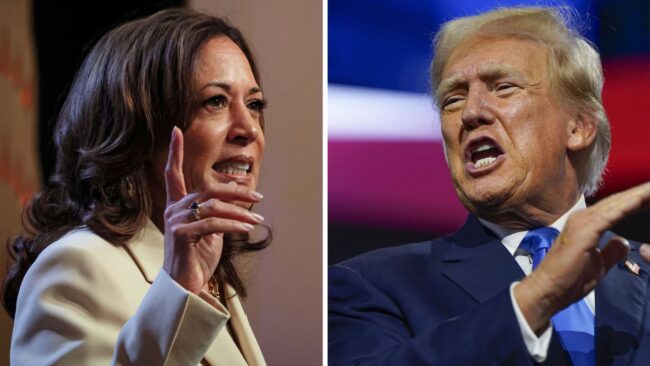With less than 24 hours to the opening of Tuesday polling, both Donald Trump and Kamala Harris are banking on massive voter turnout in critical battleground states to clinch a win in one of the most competitive presidential races in recent history.
The two campaigns have adopted high-intensity outreach strategies aimed at mobilizing every possible supporter, especially in swing states like Pennsylvania, Michigan, Georgia, and Arizona, where a strong turnout could make all the difference.
From a surge of early voting appeals to target digital campaigns and last-minute rallies, the candidates’ efforts underscore the importance of a high turnout, particularly among independents and the undecided.
For Trump’s campaign, securing a high turnout among his base is central to their strategy.
The former president has maintained his robust appeal to conservative voters, emphasizing economic security, immigration reform, and national pride, hoping to tap into the enthusiasm of his core supporters while making headway with swing voters.
Trump’s team invested heavily in traditional get-out-the-vote efforts, especially in rural areas and small towns.
Volunteers have gone door-to-door, while rallies were staged in key spots to galvanize his base.
In Georgia, for example, Trump concentrated his efforts on rural communities where his base has traditionally been strong, encouraging early voting to avoid any potential election-day issues.
With millions of dollars poured into digital advertisements, the Trump campaign has also used social media to urge supporters to vote.
Messages emphasized the importance of every individual’s vote in a “critical moment for America,” warning of the consequences if Harris were to win.
His team focused particularly on swing districts in Pennsylvania and Michigan, where winning over a slight majority could tip the scales in his favor.
While Trump has been critical of mail-in voting in past elections, this time, his campaign has worked to reassure voters that it’s a safe and reliable method, especially in states like Arizona, where mail-in ballots are widely used.
In a recent rally, Trump urged his supporters to either vote early or show up on election day, stressing that a strong turnout could “save America’s future.”
Vice President Harris’s campaign, on the other hand, has leaned heavoter turnout in battleground statesvily on coalition-building across demographics and expanding voter access through grassroots efforts and strategic partnerships.
With a focus on young voters, minorities, and suburban women, her campaign has poured resources into reaching potential voters who might not traditionally turn out in midterms.
Harris’s team has rolled out initiatives to engage first-time voters, especially young people who tend to lean Democratic but are less consistent voters.
In Michigan, for example, college campuses have seen a surge of activity from the campaign, with rallies, voter registration drives, and outreach through social media influencers.
ALSO READ: Seven swing states that may decide 2024 US election
In Georgia, Harris’s campaign has targeted communities of color, particularly African American voters in Atlanta.
Partnerships with local civic organizations have helped mobilize voters, reminding them of the importance of turnout to uphold the administration’s progress on civil rights, education, and economic policies.
In Pennsylvania, similar efforts were made to secure strong turnout among union members and working-class voters who might swing Democratic.
To address concerns about potential voter suppression, Harris’s team established legal and volunteer networks in battleground states.
In Arizona, where Latino turnout could be pivotal, her campaign worked with local leaders to assure voters of their rights and provide legal assistance if any issues arise.
Harris herself has highlighted these efforts in speeches, urging voters to “not let anything hold you back from making your voice heard.”
While both campaigns are hopeful that their turnout pushes will pay off, they face considerable challenges that could impact the results including voter fatigue, unpredictable independent voters and election infrastructure strain.
Analysts predict that high voter turnout could favor Harris, given her strong base among younger voters and minorities, demographics that traditionally benefit from a large turnout.
However, Trump’s loyal base, particularly in rural areas, could offset this if he is successful in maximizing participation among his core supporters.
A surge in mail-in voting due to lingering concerns over crowded polling stations could also play a decisive role, and each campaign has prepared to track these ballots closely to ensure an accurate count.
In this close race, both the Trump and Harris campaigns recognize that turnout in battleground states will likely decide the outcome.
With dedicated efforts to engage every last voter, the campaigns have run down the clock, rallying in key regions and intensifying their appeals to undecided voters.
With less than 24 hours before final day polling starts, America now waits to see which campaign’s turnout push will yield the desired results.
ALSO READ THESE TOP STORIES FROM NIGERIAN TRIBUNE
BREAKING: Appeal Court acquits ex-CJN Onnoghen, orders FG to unfreeze accounts
